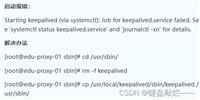1.背景
我们系统中有一个功能,可以配置content-type类型来决定是否打开gzip压缩。
这个配置与nginx官方的gzip_type不同的地方在于,nginx官方的是写死在配置文件中的,所有请求都生效;我们自研的是,不同用户的gzip_type可以不同。
最近发现一个问题
content-type配置为:image/jpeg,但是后端响应的content-type为"
image/jped;charset:utf-8"时,由于代码中是将配置的content-type与响应头中字符串作精确比较,因此,上述场景,并不能正确打开gzip功能。
nginx对此是如何处理的呢?
后端响应的content-type保持为image/jped;charset:utf-8。
1、配置gzip_type 如下,gzip生效:
gzip_type image/jpeg;
2、配置gzip_type如下,gzip不生效:(nginx官方文档中也没有提及下面的配置方法)
gzip_type "image/jpeg;charset:utf-8";
2.nginx处理流程
在进行header_filter时,对content-type做了校验:
static ngx_int_t
ngx_http_gzip_header_filter(ngx_http_request_t *r)
{
ngx_table_elt_t *h;
ngx_http_gzip_ctx_t *ctx;
ngx_http_gzip_conf_t *conf;
conf = ngx_http_get_module_loc_conf(r, ngx_http_gzip_filter_module);
if (!conf->enable
|| (r->headers_out.status != ngx_http_ok
&& r->headers_out.status != ngx_http_forbidden
&& r->headers_out.status != ngx_http_not_found)
|| (r->headers_out.content_encoding
&& r->headers_out.content_encoding->value.len)
|| (r->headers_out.content_length_n != -1
&& r->headers_out.content_length_n < conf->min_length)
// ngx_http_test_content_type中对content_type做了校验
|| ngx_http_test_content_type(r, &conf->types) == null
|| r->header_only)
{
return ngx_http_next_header_filter(r);
}
...
}
ngx_http_test_content_type定义如下:
void *
ngx_http_test_content_type(ngx_http_request_t *r, ngx_hash_t *types_hash)
{
u_char c, *lowcase;
size_t len;
ngx_uint_t i, hash;
if (types_hash->size == 0) {
return (void *) 4;
}
if (r->headers_out.content_type.len == 0) {
return null;
}
len = r->headers_out.content_type_len;
if (r->headers_out.content_type_lowcase == null) {
lowcase = ngx_pnalloc(r->pool, len);
if (lowcase == null) {
return null;
}
r->headers_out.content_type_lowcase = lowcase;
hash = 0;
for (i = 0; i < len; i++) {
c = ngx_tolower(r->headers_out.content_type.data[i]);
hash = ngx_hash(hash, c);
lowcase[i] = c;
}
r->headers_out.content_type_hash = hash;
}
return ngx_hash_find(types_hash, r->headers_out.content_type_hash,
r->headers_out.content_type_lowcase, len);
}
可以看出,将content-type头域内容转换为了小写,并使用了r->headers_out.content_type_len长度的内容,与配置的types进行比较。
但是针对第1种情况,配置和实际响应头明明是不相等的啊,是这么匹配成功的?
使用gdb打断点,发现
- r->headers_out.content_type为:
- {len = 24, data = “image/jpeg;charset=utf-8”}
- 但是,
- r->headers_out.content_type_len却是10!这个与上面为什么不一致呢?
找到设置content_type的地方:
static ngx_int_t
ngx_http_set_content_type_header(ngx_http_request_t *r,
ngx_http_lua_header_val_t *hv, ngx_str_t *value)
{
ngx_uint_t i;
// 此时,r->headers_out.content_type_len与 value->len 还是相等的
r->headers_out.content_type_len = value->len;
#if 1
for (i = 0; i < value->len; i++) {
if (value->data[i] == ';') {
// 找到第一个分号,然后修改了r->headers_out.content_type_len
r->headers_out.content_type_len = i;
break;
}
}
#endif
r->headers_out.content_type = *value;
r->headers_out.content_type_hash = hv->hash;
r->headers_out.content_type_lowcase = null;
value->len = 0;
return ngx_http_set_header_helper(r, hv, value, null, 1);
}
可以看出,nginx只使用了content-type响应头中第一个分号前的内容进行匹配。
总结
以上为个人经验,希望能给大家一个参考,也希望大家多多支持代码网。




发表评论